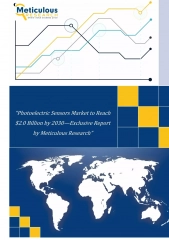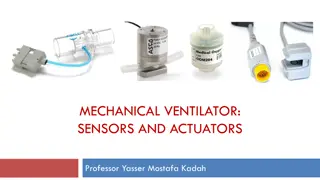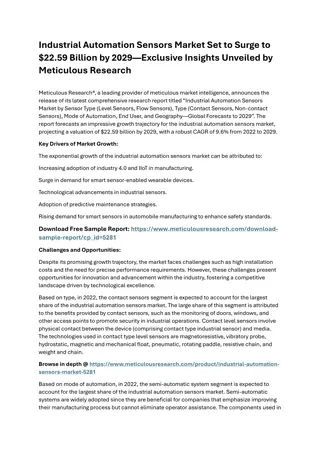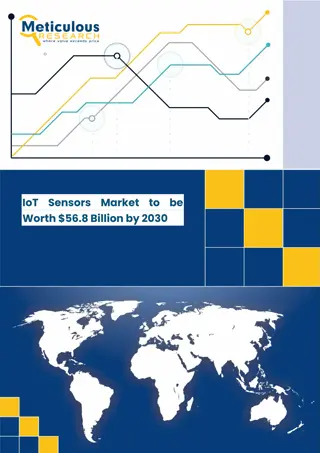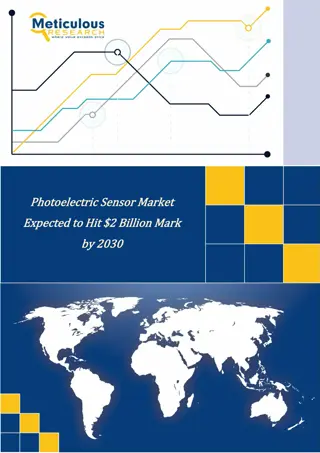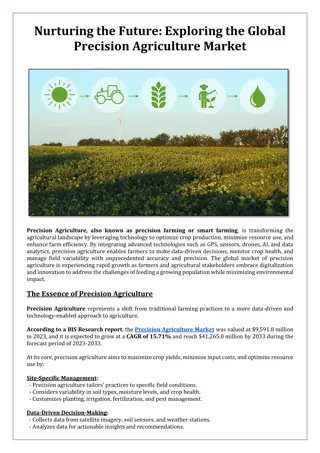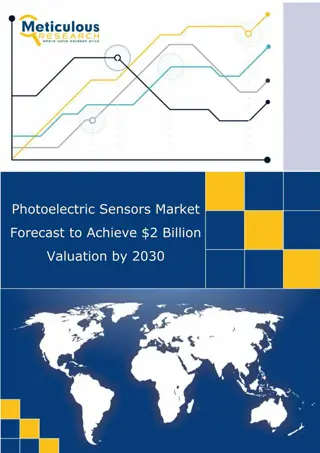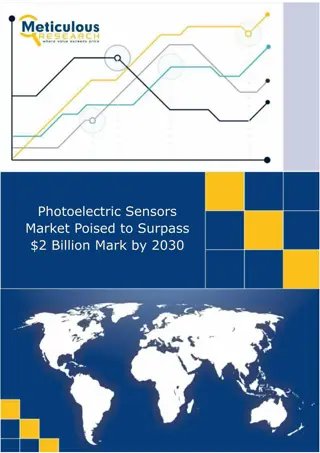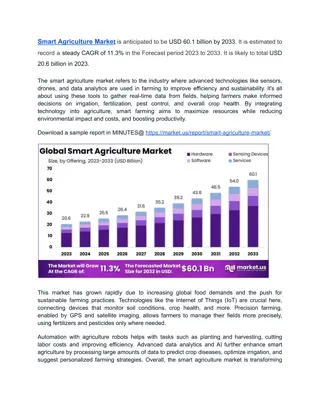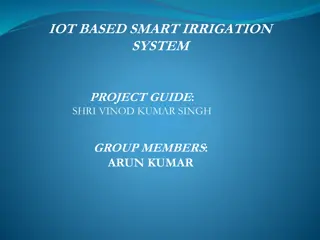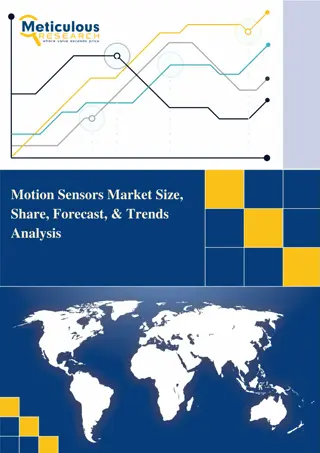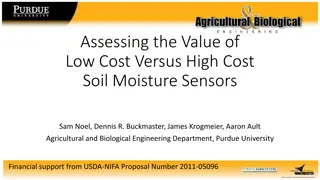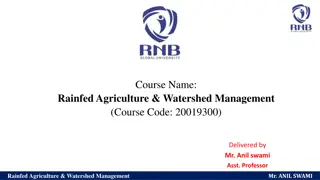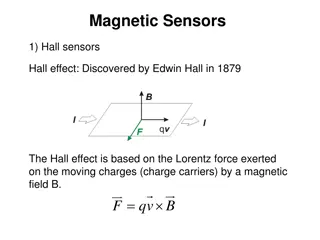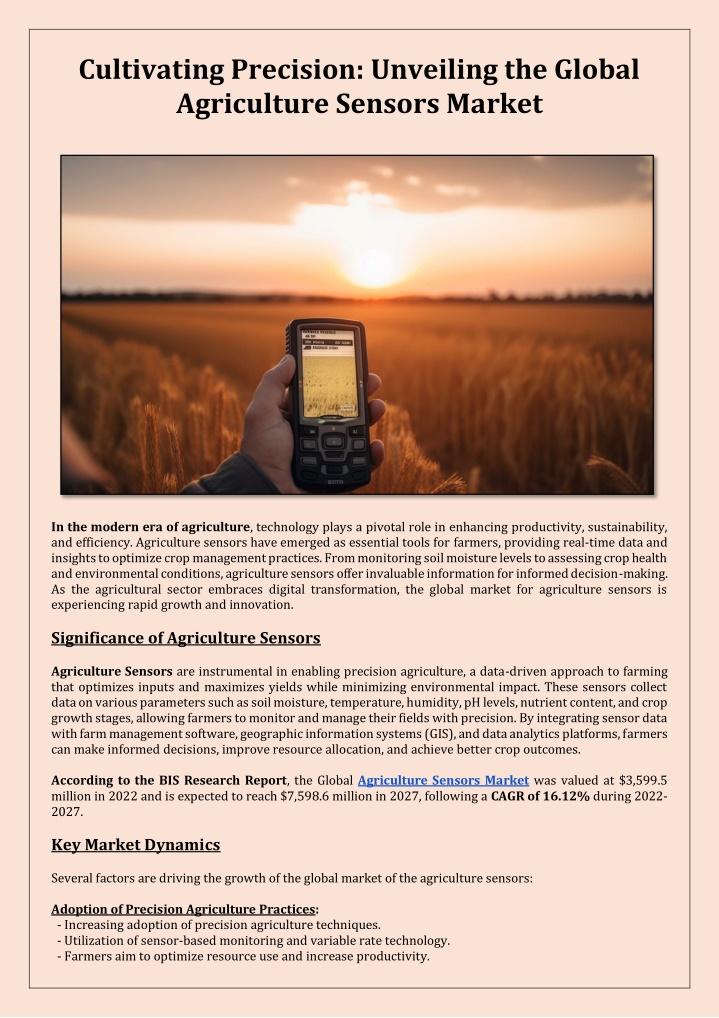
Cultivating Precision: Unveiling the Global Agriculture Sensors Market
According to the BIS Research Report, the Global Agriculture Sensors Market was valued at $3,599.5 million in 2022 and is expected to reach $7,598.6 million in 2027, following a CAGR of 16.12% during 2022-2027.
Uploaded on | 5 Views
Download Presentation

Please find below an Image/Link to download the presentation.
The content on the website is provided AS IS for your information and personal use only. It may not be sold, licensed, or shared on other websites without obtaining consent from the author. If you encounter any issues during the download, it is possible that the publisher has removed the file from their server.
You are allowed to download the files provided on this website for personal or commercial use, subject to the condition that they are used lawfully. All files are the property of their respective owners.
The content on the website is provided AS IS for your information and personal use only. It may not be sold, licensed, or shared on other websites without obtaining consent from the author.
E N D
Presentation Transcript
Cultivating Precision: Unveiling the Global Agriculture Sensors Market In the modern era of agriculture, technology plays a pivotal role in enhancing productivity, sustainability, and efficiency. Agriculture sensors have emerged as essential tools for farmers, providing real-time data and insights to optimize crop management practices. From monitoring soil moisture levels to assessing crop health and environmental conditions, agriculture sensors offer invaluable information for informed decision-making. As the agricultural sector embraces digital transformation, the global market for agriculture sensors is experiencing rapid growth and innovation. Significance of Agriculture Sensors Agriculture Sensors are instrumental in enabling precision agriculture, a data-driven approach to farming that optimizes inputs and maximizes yields while minimizing environmental impact. These sensors collect data on various parameters such as soil moisture, temperature, humidity, pH levels, nutrient content, and crop growth stages, allowing farmers to monitor and manage their fields with precision. By integrating sensor data with farm management software, geographic information systems (GIS), and data analytics platforms, farmers can make informed decisions, improve resource allocation, and achieve better crop outcomes. According to the BIS Research Report, the Global Agriculture Sensors Market was valued at $3,599.5 million in 2022 and is expected to reach $7,598.6 million in 2027, following a CAGR of 16.12% during 2022- 2027. Key Market Dynamics Several factors are driving the growth of the global market of the agriculture sensors: Adoption of Precision Agriculture Practices: - Increasing adoption of precision agriculture techniques. - Utilization of sensor-based monitoring and variable rate technology. - Farmers aim to optimize resource use and increase productivity.
- Agriculture sensors provide real-time data on soil and crop conditions. - Enable targeted interventions and optimized management practices. Technological Advancements and Product Innovation: - Advances in sensor technology, miniaturization, and wireless connectivity. - Development of more affordable, reliable, and user-friendly agriculture sensors. - Expanded application scope across diverse cropping systems. - Suitable for various climates and farm sizes. - Enables deployment of sensors in different agricultural contexts. Demand for Data-Driven Farming Solutions: - Increasing availability of agricultural data and analytics tools. - Fueling demand for sensor-based solutions providing actionable insights. - Agriculture sensors collect precise and timely data on critical factors. - Facilitate data-driven decision-making and improve farm profitability. - Enhance farm management practices. Action Required: Get your hands on our FREE Sample PDF Report on Agriculture Sensors Market Research! Global Agriculture Sensors Market Segmentation Segmentation by Application: - Crop Monitoring - Irrigation Management - Livestock Management - Climate Monitoring - Others Segmentation by Product: - Location Sensor - Humidity Sensor - Electrochemical Sensor - Mechanical Sensor - Weather Sensor - Optical Sensor Segmentation by Region: - North America - U.S., Canada, Mexico, and Rest-of-North America - Europe - Italy, Germany, Netherlands, Spain, Belgium, Greece, Switzerland, France, and Rest-of-Europe - U.K. - China - Asia-Pacific - Japan, India, Australia, and Rest-of-Asia-Pacific - South America - Brazil, Argentina, and Rest-of-South America - Middle East and Africa - Turkey, South Africa, and Rest-of-Middle East and Africa North America generated the highest revenue of $1,032.9 million in 2021, which is attributed to the large-scale adoption of advanced technologies and an increasing number of agriculture sensor startups backed by government, institutional, and corporate funding in the region. Future Market Challenges and Opportunities While the global market of agriculture sensors holds immense potential for growth and innovation, challenges such as data management and interpretation, sensor integration with existing farm machinery, and cost constraints remain. However, ongoing efforts to address these challenges, along with advancements in sensor technology, data analytics algorithms, and connectivity solutions, present opportunities for market expansion and penetration. By collaborating with stakeholders across the agricultural value chain, fostering digital literacy among farmers, and leveraging emerging technologies such as artificial intelligence and
Internet of Things (IoT), the agriculture sensors industry can continue to drive efficiency, sustainability, and resilience in farming practices worldwide. Also Read: Agriculture Imaging Sensor Market Conclusion The Global Agriculture Sensors Industry is poised to play a crucial role in shaping the future of farming, enabling farmers to monitor, manage, and optimize their operations with unprecedented precision and efficiency. By harnessing the power of sensor technology, farmers can overcome traditional challenges, minimize risks, and maximize productivity while promoting environmental sustainability and resource conservation. As the adoption of precision agriculture practices accelerates globally, the agriculture sensors market will continue to evolve, innovate, and contribute to the advancement of sustainable and resilient food systems for generations to come.

